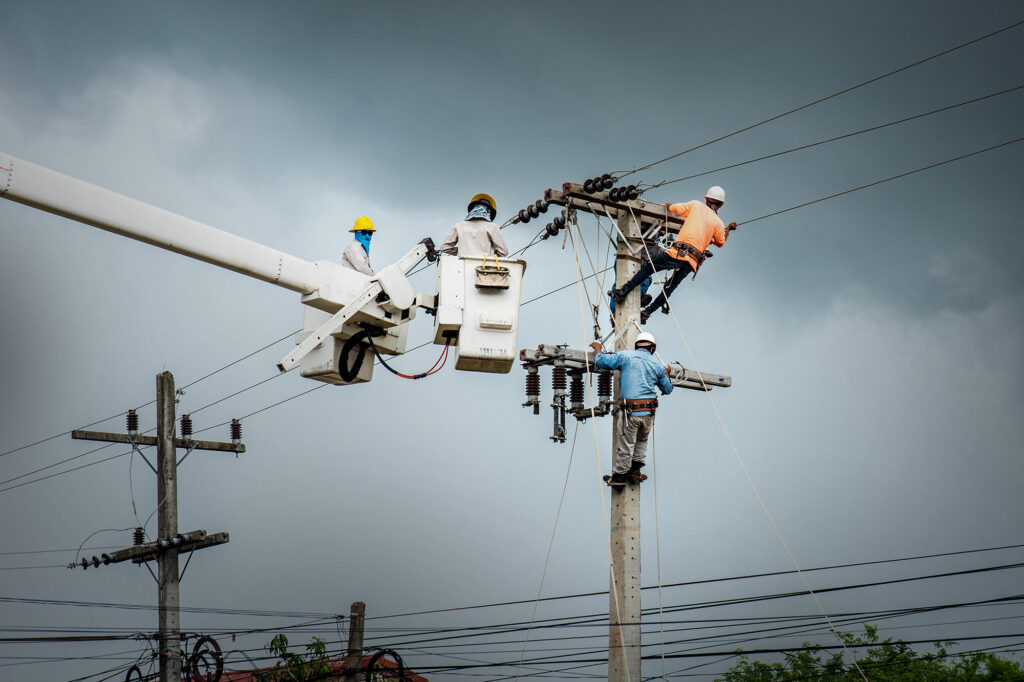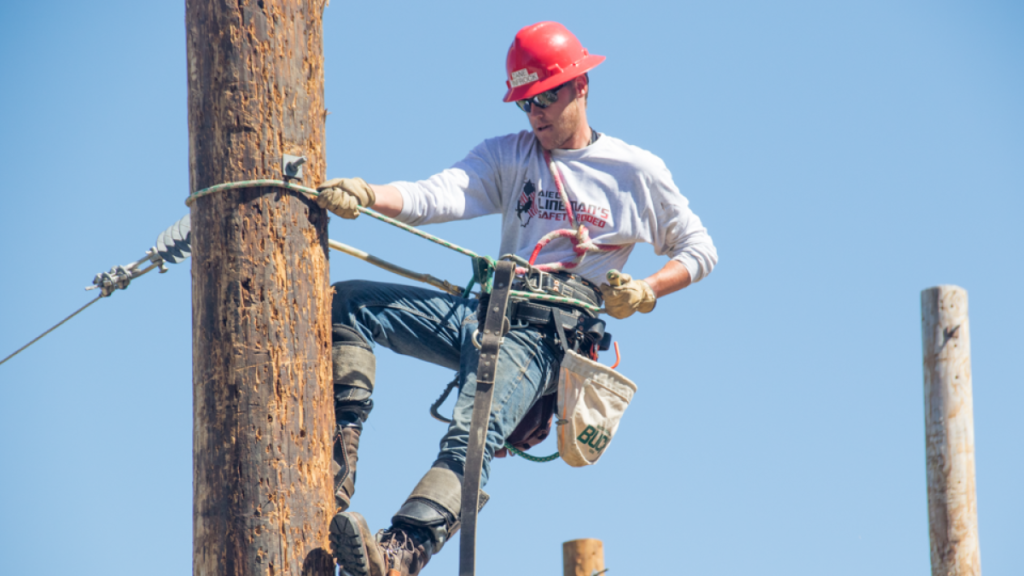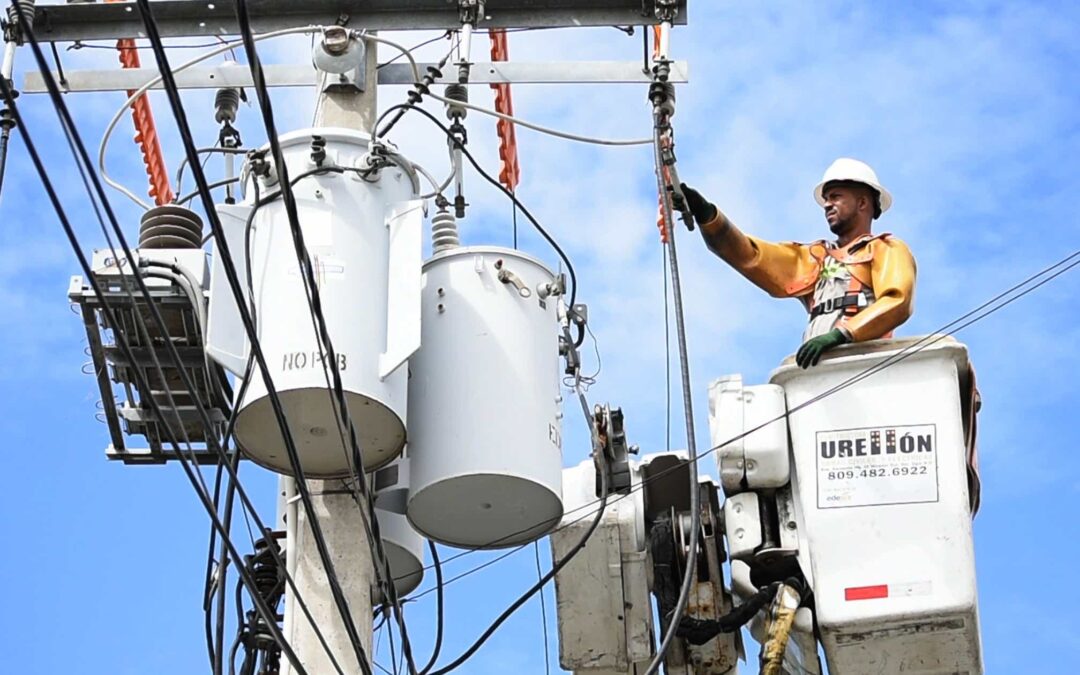- The climbing gears typically consists of specialized equipment designed to provide stability, support, and protection for the climber.
- Formed wires are used in the overhead transmission lines to protect the conductors from abrasion and corrosion caused by the strong winds.
- Safety is a top priority for utility pole workers, and the use of appropriate climbing gears is essential to ensure their well-being.
Utility pole workers have a challenging job that requires them to climb tall poles to maintain or repair electrical, telephone, and cable lines. To perform their job safely and efficiently, these workers rely on climbing gears specifically designed for utility pole climbing. In this article, we will take a global overview of climbing gears used by utility pole workers in different countries and regions.
Formed wire is also known as preformed wire, helical or shaped wire. They are used in the overhead transmission lines to protect the conductors from abrasion and corrosion caused by the strong winds.
TTF Power manufactures and supplies formed wire products and accessories for power transmission and distribution systems. Our formed wire products are made of wires and strands that have been previously been preset during manufacture into the helical structure that they take in the completed rope. A greatly preformed rope reduces internal stresses, eases rope handling and gives more distribution of load on the wires and strands.
The definition of utility pole
A utility pole, also known as a power pole or telephone pole, is a tall wooden or metal structure that is used to support overhead power lines, telephone cables, and other types of utility wires. These poles are typically located along roadsides, in residential and commercial areas, and in other places where utility lines need to be supported above ground. Utility poles are an important component of the electrical and telecommunications infrastructure, and they play a critical role in providing reliable and efficient delivery of electricity and communication services to homes and businesses.
Different climbing gear in different continents and countries

Europe:
In Europe, utility pole workers commonly use pole climbers, safety belts, lanyards, and ropes. Pole climbers are typically made of steel or aluminum and feature sharp spikes that attach to the worker’s boots, enabling them to climb up the pole. Safety belts and lanyards are used to secure the worker to the pole, while ropes are used for descending and ascending the pole.
In addition to these basic climbing gears, some European countries have developed specialized climbing gears to suit their particular needs. For example, in Germany, workers use a specialized climbing system called “Seilunterstützte Arbeit” (SUA), which translates to “rope-supported work.” This system allows workers to climb poles and towers using ropes and pulleys, minimizing the physical effort required for climbing.
Asia:
In Asia, utility pole workers use a similar set of climbing gears to those used in Europe, but with some regional variations. For example, in Japan, workers use a specialized type of pole climber called “ashitori,” which has an angled spike that provides better grip on wooden poles. In China, workers use a climbing harness that wraps around the body and legs, allowing the worker to climb up the pole with greater ease.
In some countries, such as India, utility pole workers use makeshift climbing gears due to a lack of proper equipment. For example, workers may use ropes tied to the pole to pull themselves up or use simple harnesses made of cloth to secure themselves to the pole.
North America:
In North America, utility pole workers commonly use pole climbers, safety belts, lanyards, ropes, and bucket trucks. Pole climbers are the most commonly used gear in North America, consisting of sharp spikes that attach to the worker’s boots and enable them to climb up the pole. Safety belts and lanyards are used to secure the worker to the pole, while ropes are used for descending and ascending the pole. Bucket trucks are used for tasks that require workers to reach high places without climbing the pole.
In addition to these basic climbing gears, North American workers also use specialized tools for working on different types of poles. For example, workers may use a grip hoist to pull themselves up metal poles, while wooden poles may require specialized pole climbers with a curved spike that can grip the pole better.
South America:
In South America, utility pole workers use a range of climbing gears, including pole climbers, safety belts, lanyards, ropes, and specialized tools for working on wooden poles. For example, in Brazil, workers use a type of pole climber with a curved spike that can grip metal poles. In rural areas, workers may use wooden ladders to climb up poles made of wood.
In some countries, such as Peru, workers use a unique type of climbing gear called “pashana,” which consists of a rope loop that wraps around the worker’s legs and the pole, allowing them to climb up the pole using their feet.
Africa:
In Africa, utility pole workers use a range of climbing gears, including pole climbers, safety belts, lanyards, ropes, and wooden ladders. Wooden ladders are commonly used in rural areas where poles are made of wood. Pole climbers, safety belts, lanyards, and ropes are used in urban areas where poles are made of metal.
Australia:
In Australia, utility pole workers use a range of climbing gears, including pole climbers, safety belts, lanyards, ropes, and specialized tools for working on wooden poles. Pole climbers are typically made of steel or aluminum and feature sharp spikes that attach to the worker’s boots. Safety belts and lanyards are used to secure the worker to the pole, while ropes are used for descending and ascending the pole.
Conclusion:

Lineman safety refers to the practices and protocols put in place to ensure the safety of electrical linemen who work on power lines, poles, and related equipment. Linemen are responsible for installing, maintaining, and repairing power lines that deliver electricity to homes, businesses, and other structures. Due to the nature of their work, they face a variety of hazards, including falls, electrical shocks, and exposure to hazardous materials. So it is necessary to have training and make best use of all these climbing gears.
Utility pole workers around the world use a range of climbing gears to perform their job safely and efficiently. While the types of gears used may vary by region, they all serve the same purpose of enabling workers to climb tall poles and perform their tasks. Safety is a top priority for utility pole workers, and the use of appropriate climbing gears is essential to ensure their well-being.
FAQs
What is utility pole?
A utility pole, also known as a power pole or telephone pole, is a tall wooden or metal structure that is used to support overhead power lines, telephone cables, and other types of utility wires.
Why is necessary to use climbing gears for lineman?
They can provide stability, support, and protection for the climber.
What is Formed fire?
Formed wire is also known as preformed wire, helical or shaped wire. They are used in the overhead transmission lines to protect the conductors from abrasion and corrosion caused by the strong winds.


